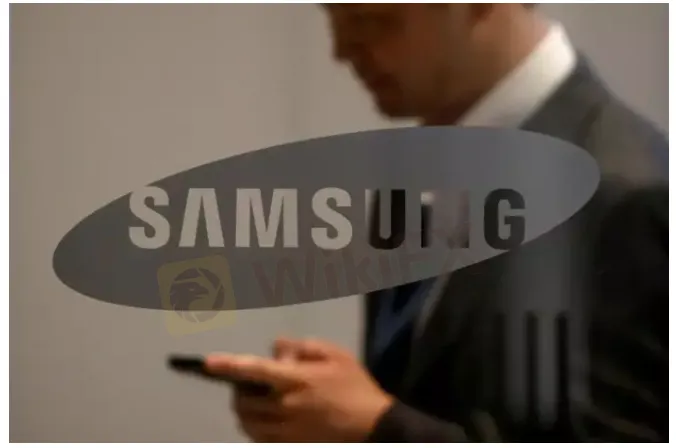简体中文
繁體中文
English
Pусский
日本語
ภาษาไทย
Tiếng Việt
Bahasa Indonesia
Español
हिन्दी
Filippiiniläinen
Français
Deutsch
Português
Türkçe
한국어
العربية
Samsung Electronics Q1 profit tops market expectations on solid chip demand
Abstract:Samsung Electronics Co Ltd on Thursday reported a 50% jump in quarterly operating earnings to post its highest first-quarter profit since 2018, as solid demand underpinned prices for memory chips.

Earnings at the worlds largest memory chip and smartphone maker were also supported by brisk smartphone sales in the quarter, along with a disruption at a rival NAND Flash chip plant, analysts said.
Samsung put its first-quarter profit at 14.1 trillion won ($11.6 billion) in a preliminary earnings release, versus a Refinitiv SmartEstimate of 13.3 trillion won. Revenue likely rose 18% from the same period a year earlier to a record 77 trillion won, also above market expectations.
“The guidance beat market expectations, probably due to memory chip shipments and prices being better than expected,” said Park Sung-soon, analyst at Cape Investment & Securities.
Although memory chip prices dipped in the first quarter, analysts said solid demand from data centre clients as well as cautious investment spending by chipmakers and limited capacity expansion buoyed Samsungs chip earnings, which make up about half of its total profits.
The chipmaker also likely benefited from a disruption at a rival NAND Flash chip plant owned by Japans Kioxia and American firm Western Digital due to contamination of raw materials.
“After the contamination issue at Kioxia, I think there were rush orders for NAND Flash chips made to Samsung for products that were meant to be secured from Kioxia,” Park said.
The disruption at the Kioxia plant in early February is expected to drive up NAND Flash prices by 5%-10%, offsetting the effects of modestly high inventories maintained by buyers, data provider TrendForce said.
Samsung shipped an estimated 72 million smartphones in the first quarter, Counterpoint Research said, down some 11% from a year earlier, mostly due to a later than usual release of its newest flagship smartphone, the Galaxy S22.
The Galaxy S22 series globally sold some 50% more in the first week after its late February launch than its previous model S21, according to Sujeong Lim, an associate director at Counterpoint.
Samsung is estimated to have shipped slightly over 6 million units of the S22 series by the end of March, Lim said, adding that sales were in line with initial expectations.
Samsung is due to release detailed earnings on April 28, when investors will be interested to hear any comments on its M&A plans, how it plans to operate its memory chip business to boost profitability, and chip demand outlook.
Samsung shares fell 0.2% in morning trade, versus a 0.9% drop in the wider market.

Disclaimer:
The views in this article only represent the author's personal views, and do not constitute investment advice on this platform. This platform does not guarantee the accuracy, completeness and timeliness of the information in the article, and will not be liable for any loss caused by the use of or reliance on the information in the article.
Read more

The Daily Habits of a Profitable Trader
Every professional trader follows a structured approach to ensure they are well-prepared, disciplined, and able to seize opportunities with confidence. Whether you are a seasoned investor or an aspiring trader, adhering to a robust daily checklist can significantly enhance your performance. Use this checklist to check if you are a qualified trader

The Impact of Interest Rate Decisions on the Forex Market
Interest rate changes determine currency attractiveness, influencing capital flows and exchange rate trends. Understanding this mechanism helps investors navigate the forex market effectively.

How a Housewife Lost RM288,235 in a Facebook Investment Scam
A 47-year-old housewife in Malaysia recently fell victim to an online investment scam, losing a substantial sum of RM288,235 after engaging with a fraudulent scheme advertised on Facebook.

A Trader’s Worst Mistake: Overlooking Broker Reviews Could Cost You Everything
In today’s digital age, reviews influence nearly every decision we make. When purchasing a smartphone, television, or home appliance, we pore over customer feedback and expert opinions to ensure we’re making the right choice. So why is it that, when it comes to choosing an online broker where real money and financial security are at stake many traders neglect the crucial step of reading reviews?
WikiFX Broker
Latest News
The Withdrawal Trap: How Scam Brokers Lure Victims into Paying More
FCA to Investors: Think Twice Before Trusting These Brokers
Trump\s tariffs: How could they affect the UK and your money
Trump gambles it all on global tariffs he\s wanted for decades
TradingView Brings Live Market Charts to Telegram Users with New Mini App
Trump tariffs: How will India navigate a world on the brink of a trade war?
Interactive Brokers Launches Forecast Contracts in Canada for Market Predictions
Authorities Alert: MAS Impersonation Scam Hits Singapore
Stocks fall again as Trump tariff jitters continue
IG Group Acquires Freetrade for £160M to Expand UK Investment Market
Currency Calculator







